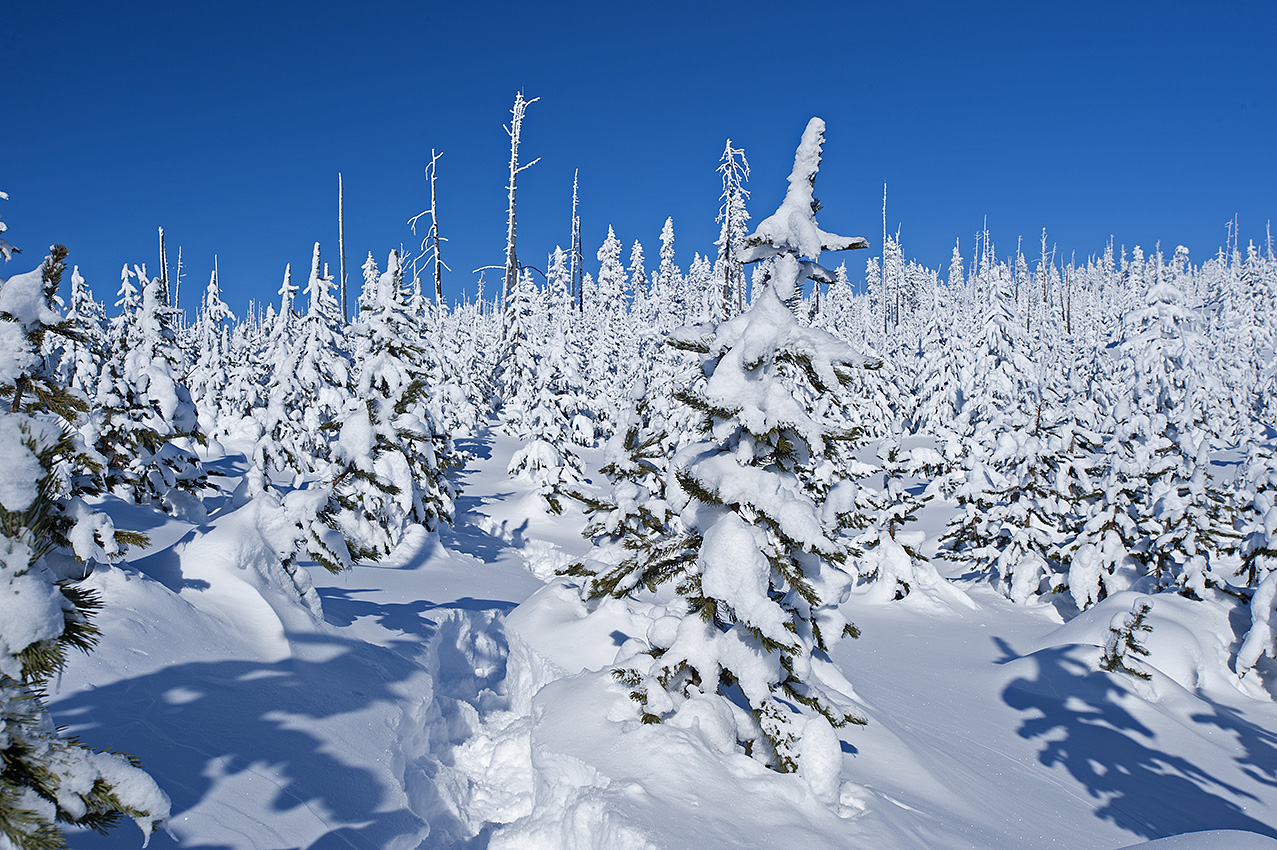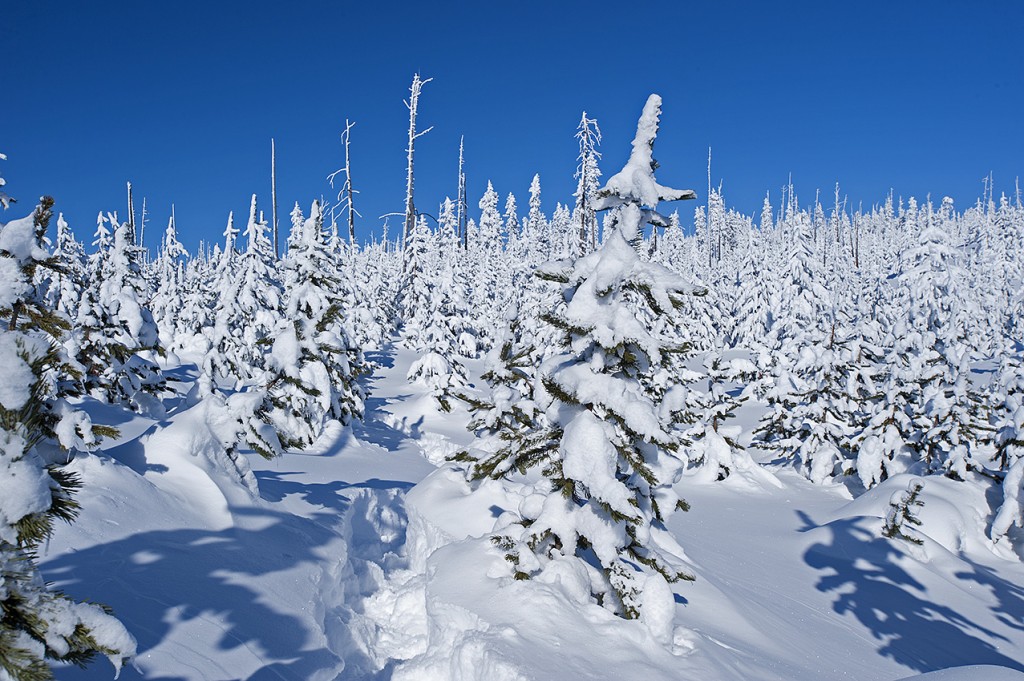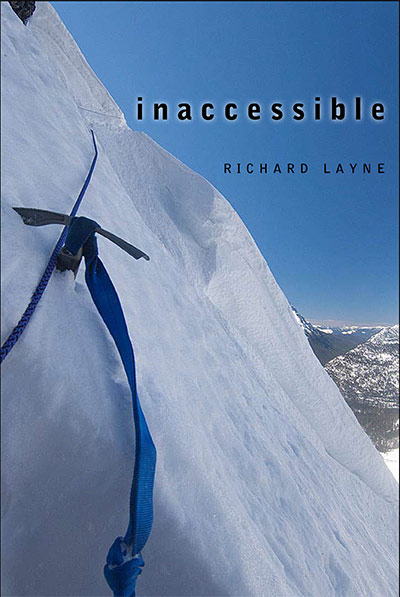

Is it time to say goodbye to the El Niño forecast and alter my travel plans accordingly? As of November 20, 2014, the three-month extended outlook along Montana’s portion of the Continental Divide predicts from 33% up to a 40% chance for above normal temperatures. In addition, the NOAA (http://www.cpc.ncep.noaa.gov/) is now predicting an equal chance for a normal winter to 33% chance below normal moisture.
This interprets into an increased chance I will encounter powder snow until near the end of February 2015. The winter of 2014 also had the label of “equal chance” for a normal winter. The snowpack was huge and the powder nearly untenable for extended snowshoe travel throughout the month of February.
It has been and continues to be, albeit with less hope, my plan to begin the trip near the end of the first week of January. This close, 44 days until beginning the 90-day trip, however means the likelihood is growing that I will not begin the trip until the first part of February 2015.
Last autumn I placed my resupplies at locations where I could take on traveling in deep powder snow. While I have a tremendous amount of food and fuel to get me to Monida Pass on Interstate 15, there may still not be enough. In deep powder snow, I average between three and four miles of forward progress per day. There is also the possibility that I will have to use technical climbing gear at six separate locations, where my daily progress measurements will be in feet rather than miles. Additionally, there will be down days due to storms and bad avalanche conditions.
I have 39 days of supplies for the first 140 miles of the route. If I only average three miles per day I will run out of supplies eight days before arriving at Monida Pass. Should that happen, I will lose three and four pounds of body weight per day. To encounter a weight loss like that after already being on the route for one month would be devastating.
Throughout the 462-mile route I have alternate routes to be used to get around avalanche areas and if needed, to shorten the route. One such route is located at Red Rock Pass. However, that would only shorten my route by two or three days. After that alteration, my options would be limited, and my supplies would still fall five days short of Monida Pass.
With that said, I have always known the trip carries risks. As much as I have prepared, it may not be enough. Only traveling the route will clear the air. Nor is there anyone in front of me who has experience with this route to advise me. My most experienced advisor too often has also been my greatest enemy—my head.

